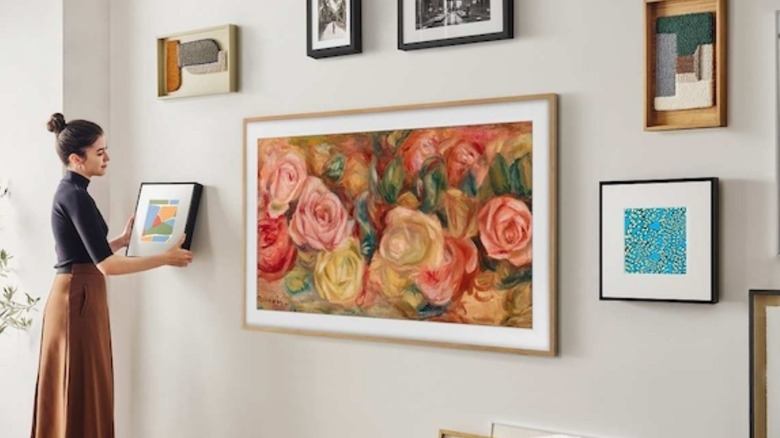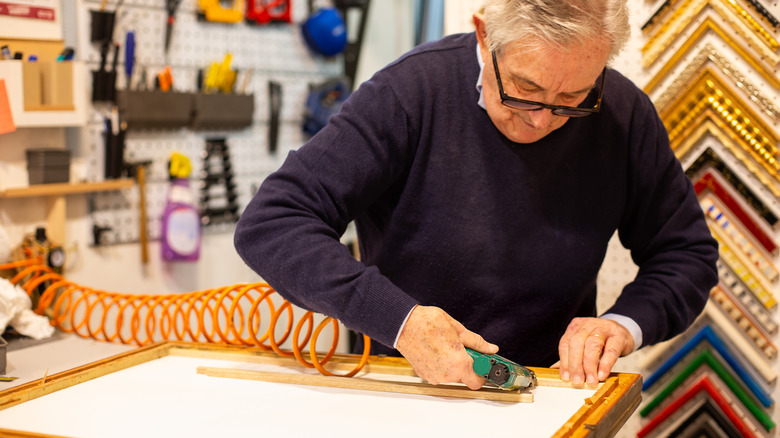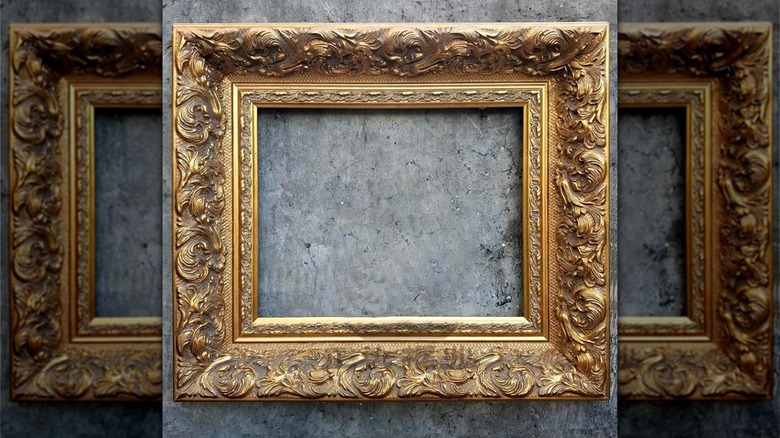Yes, You Can Build A DIY Frame TV For A Lower Cost - Here's What You'll Need
We may receive a commission on purchases made from links.
If you've taken a walk down the TV aisle in your local electronics store recently, then you've probably noticed Samsung's Frame TVs. These are quite distinctive, as they boast a slender design and a discreet wooden picture frame over the edges that makes the TV look less like a piece of tech and more like an art installation. They also boast a few less obvious features, like a matte display that is designed to be anti-reflective, a motion-activated Art Mode, customizable bezels, a One Connect Box which helps to hide cables, and access to a subscription-based art gallery. These TVs start at $749.99 and go all the way up to $2,199.99. Some critics may see them as just a gimmick, but others swear that they're worth the price. They've grown increasingly popular since their inception, but the high cost of entry may still give some users pause.
Hisense and TCL have each made cheaper alternatives that mimic the Frame's exterior design. But those who already own a television may not want to go out of their way to buy a new one just for the frame. Others may prefer a TV with specific features or of a certain size that isn't available on the official models.
Fortunately, there are a few easy and affordable DIY methods for piecing together your own frame. More advanced woodworkers might have their own ideas for how to go about making a standard TV into a framed model, but there are also some relatively beginner-friendly ways to achieve the desired effect that can easily be done with a few simple tools and supplies.
You'll need a TV and wood for the frame
One of the first things you're going to need is a TV that will have the necessary tech built in. Roku's TVs have added a free Backdrops feature that allows you to display artwork on your television whenever it's not in use, making them an ideal choice for making into a framed TV. Several other operating systems, such as the one used in Amazon Fire TVs, also have customizable screensavers that allow you to upload your own images as well, however. You'll also want to make sure that the TV is relatively thin and account for how it hangs from the wall while mounted. TVs with larger backs that cannot be hung flush to the wall may not have the same elegant aesthetic as the Frame TVs.
Once you've chosen your TV and your preferred mounting method, you'll need to measure the borders and choose the type of wood you'll be using as a frame. Those seeking a more rustic look might prefer to use reclaimed wood, construction-grade 2x4 studs, or something with a live edge (though these tend to be more expensive). Those seeking a simpler and cleaner aesthetic might opt for simple 1x3 strip boards or some more expensive hardwood, while those who want something more decorative might choose to work with some of the more ornamental moulding options sold at their local hardware store. Whatever medium you choose, you'll likely want something that is approximately 3 inches in width. You can cut these pieces to length yourself if you have access to the tools to do so, but many stores, like Home Depot, have a service center that will cut your pieces for free.
Fasteners, clips, and sealant
Next up, you'll need a means of assembling this wood into a frame and attaching it to your TV. Whether you decide to go with a simple butt joint or a 45-degree miter joint, you'll need a method of attaching the pieces. Using a framing nailer or brad nailer to attach them is simplest if you have access to one, but V nails can also be used with a simple hammer if not. In either case, a bit of PVA wood glue can strengthen the joint and wood filler can be used if you wish to hide the holes made by the nails. Once it's assembled, you'll want to sand off any rough surfaces or edges with some 220-grit sandpaper to make sure that the frame is free of splinters and blemishes. There are a few ways you can attach this frame to your TV, depending on how you choose to assemble the frame. Flat backing clips will work great if the frame fits flush around the edges of the TV and fits to the back, while stepped offset clips can give you a bit more wiggle room if the frame fits more toward the front of the TV.
Finally, you'll need to seal the wood. Paint is the simplest method and the easiest way to achieve a clean final result. You can use spray paint to achieve a flat, solid color, or use it as a base coat for a metallic finishing wax such as Rub 'n Buff. This is a great way to achieve that classical gold-leaf picture frame look. Those who wish to retain the natural look of the wood might prefer to simply seal it with lacquer, shellac, or polyurethane.


